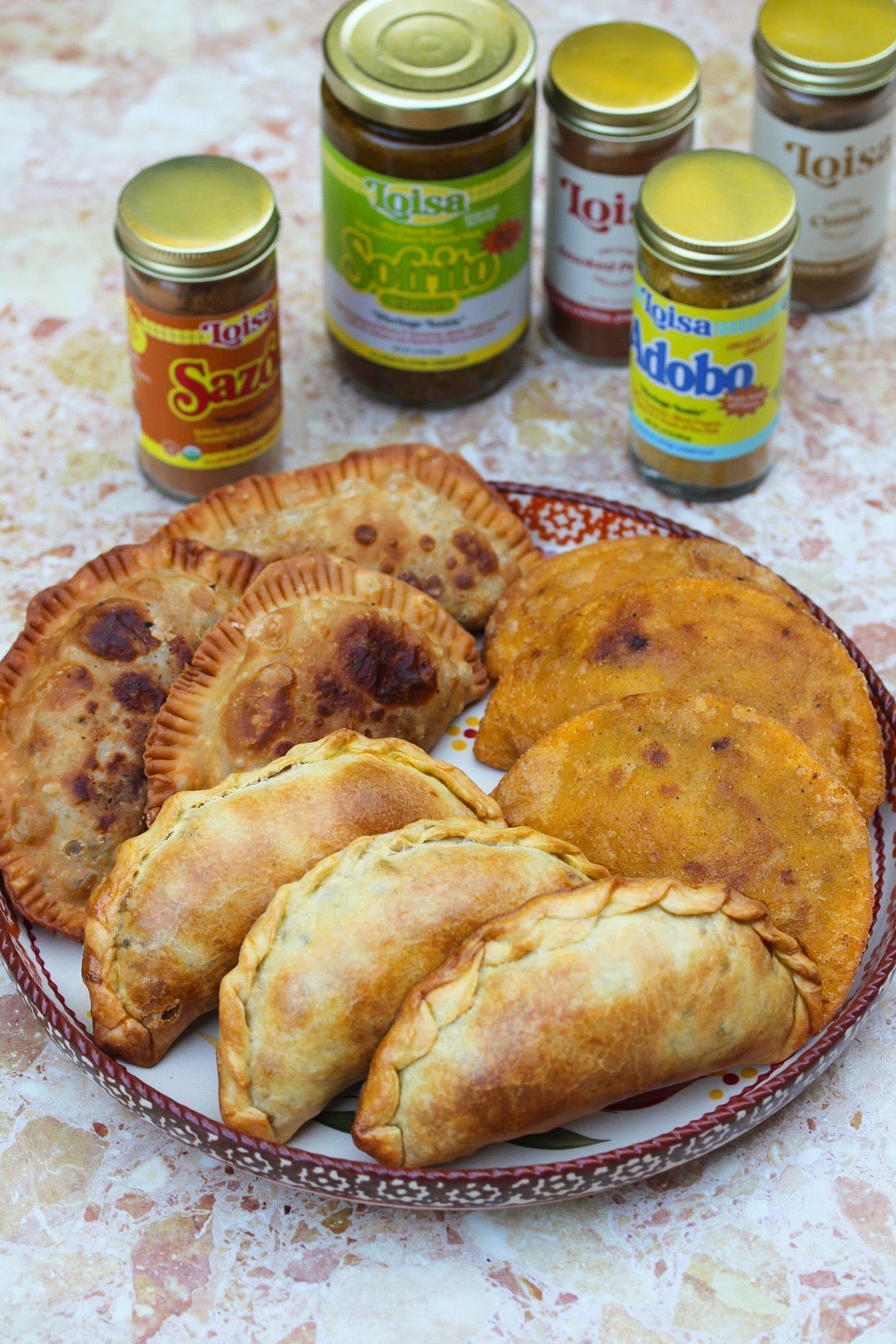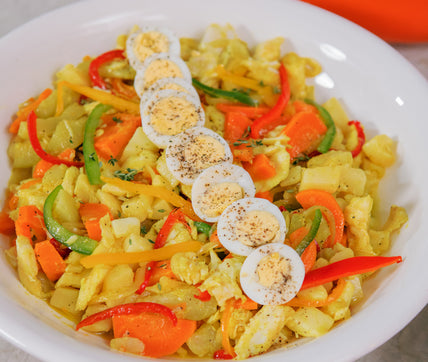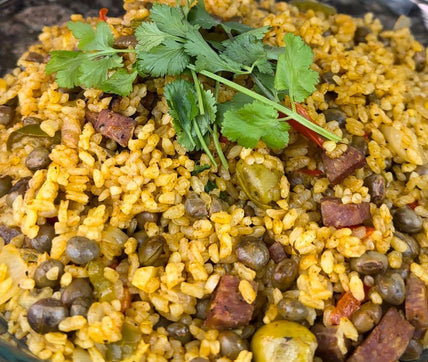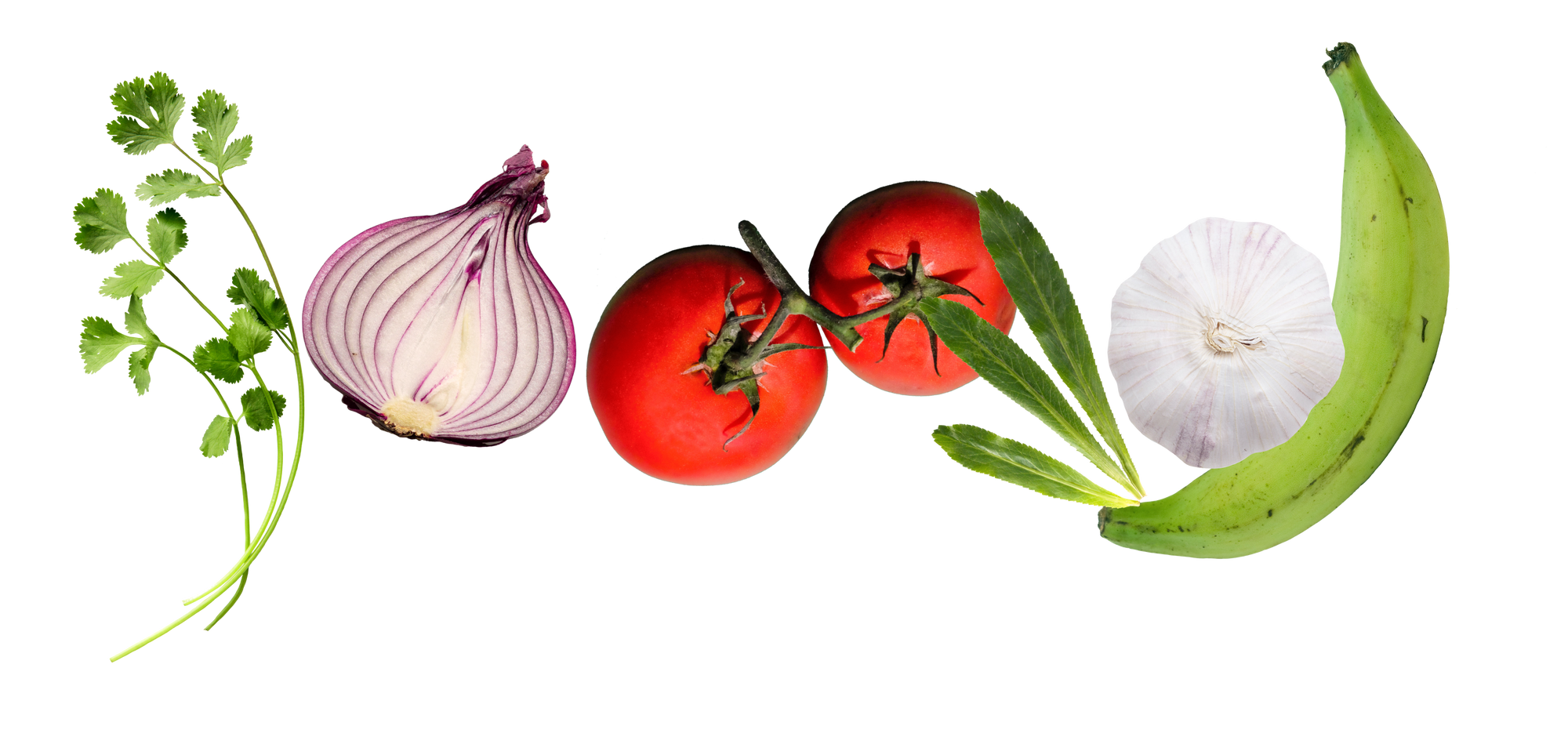
Empanadas 3 Ways
Exploring three delicious versions of empanadas from Argentina, Colombia, and Dominican Republic.
By: Franchesca Livraghi | @breakthrukitchen
It’s Hispanic Heritage Month, and what better way to celebrate than with one of the most loved foods across our countries: empanadas! No matter where you go in Central America, South America, or the Caribbean, you’ll find a version of this golden pastry, each with its own dough, filling, and style. Some are baked, some are fried, but they all bring that same comfort and tradition to the table. Today we’re going to be exploring three delicious versions from Argentina, Colombia, and Dominican Republic.

Empanadas side by side
Every country has its own way of making empanadas, and sometimes even its own name for them. In Argentina, they’re usually baked with that beautiful repulgue braid on the edge and filled with beef, olives, and egg with famous regional styles like salteñas, tucumanas, and mendocinas. In Colombia, they’re made with cornmeal dough and fried until super crispy, with a beef and potato filling. In the Dominican Republic, they’re often called pastelitos, made with a flaky flour dough and stuffed with Sofrito seasoned beef before frying.
And that’s just 3 countries, in Puerto Rico you’ll find empanadillas, in Venezuela they’re stuffed with cheese and shredded beef, and in Chile the famous empanada de pino has raisins and baked dough. Different names, different fillings, but all delicious and all part of the same tradition.

Tips for Argentine Empanadas
- Use a lean beef blend like 90/10 so the filling cooks evenly without releasing too much grease, which can make the dough heavy.
- Let the filling cool completely before you fill the dough. If it’s still warm, it will steam the inside of the dough and cause the empanadas to open or get soggy while baking.
- Practice the repulgue fold, which is the traditional Argentine way of sealing empanadas. To do it, pinch the edge of the dough to seal, then fold a small section of the edge over itself and press down. Continue folding and pressing in the same direction until you’ve gone all the way around, creating a rope-like braid. This not only looks beautiful but also helps keep the filling from spilling out.

Tips for Colombian Empanadas
- Make sure to use precooked white cornmeal (masarepa) for the dough because it gives that authentic flavor and texture. Regular cornmeal won’t work the same way.
- Let the filling cool completely before shaping the empanadas. If the filling is warm, the cornmeal dough can soften and fall apart, making the empanadas soggy while frying which is something these are especially prone to since they don’t use a traditional flour dough.
- Seal the edges firmly with a bowl or cup. Pressing down cuts the empanada cleanly and creates a tight seal, which is especially important since these are fried and can open if not sealed well.

Tips for Dominican Empanadas
- Use cold butter and ice water when making the dough. This keeps the dough flaky and strong enough to hold its shape while frying.
- Roll the dough evenly so all the empanadas cook at the same speed. Thick spots can stay doughy in the middle while thin spots might brown too quickly.
- Fry the empanadas in small batches over medium heat so the oil temperature stays steady. If the pan is too crowded, the oil cools down and the empanadas absorb oil instead of crisping up.

Serve the empanadas with Recaito Mayo
Traditionally, each country has its own way of serving empanadas. In Argentina beef empanadas are usually served with chimichurri, in Colombia empanadas are paired with ají, and in Dominican Republic pastelitos are almost always served with mayo-ketchup.
That’s why Recaito Mayo makes so much sense here, it brings together the freshness of Loisa Recaito with a little bit of creaminess that everyone loves. It’s mild enough to replace mayo-ketchup, herby like chimichurri, and flavorful enough to stand in for ají. In other words, it’s the one dip that works for all three empanadas while still honoring the flavors you’d find in each country’s kitchen.




